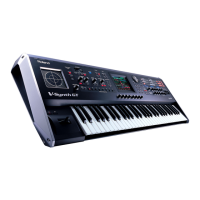224
Utility Mode
Disconnecting USB Storage
1.
Select the V-Synth GT drive icon on the desktop, and drag it into the “trash.”
Alternatively, select “Eject “V-SYNTH GT”” from the “Files” menu.
2.
Press [EXIT].
The USB storage will be disconnected.
V-Synth-GT_e.book 224 ページ 2007年4月9日 月曜日 午後1時46分

